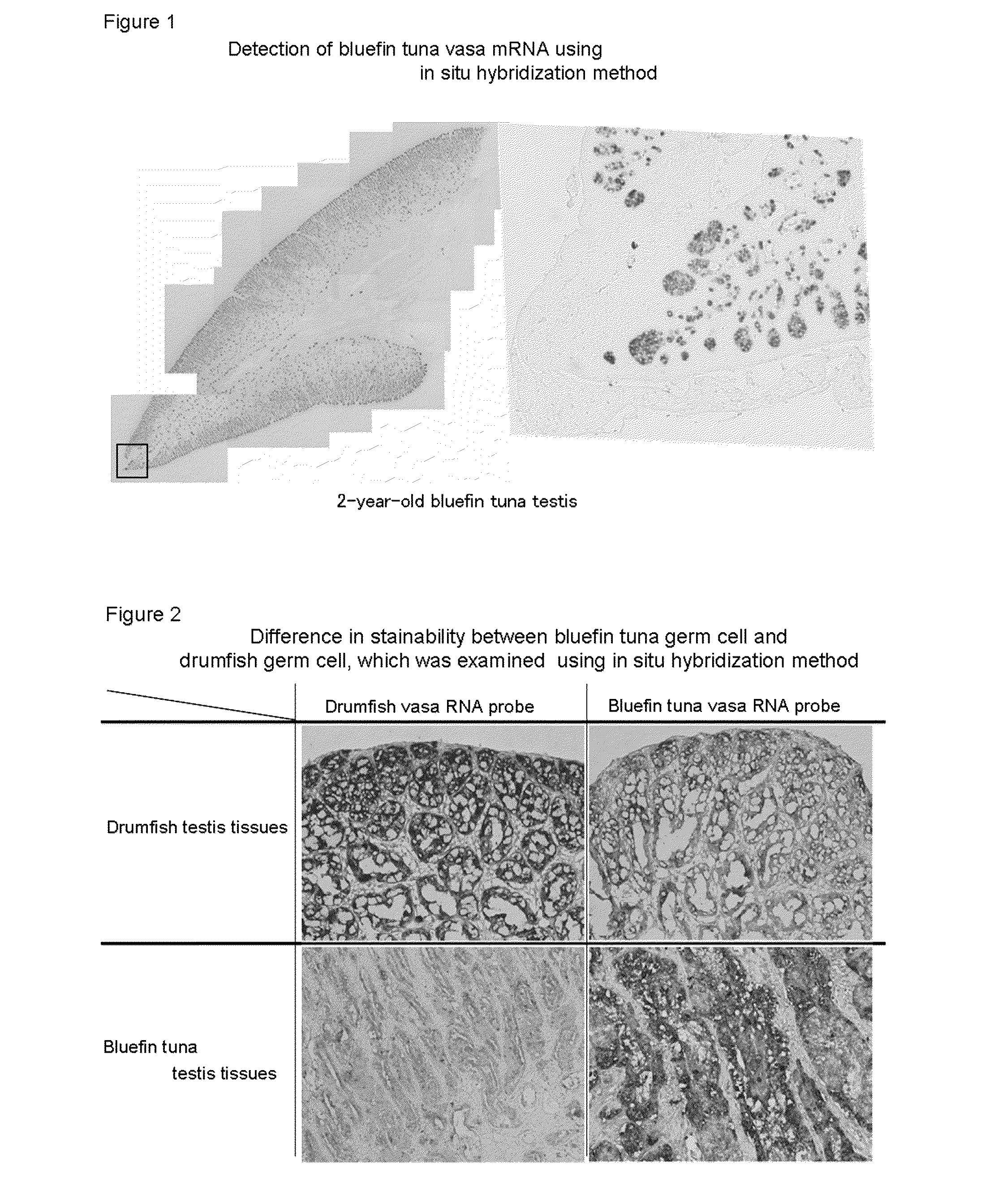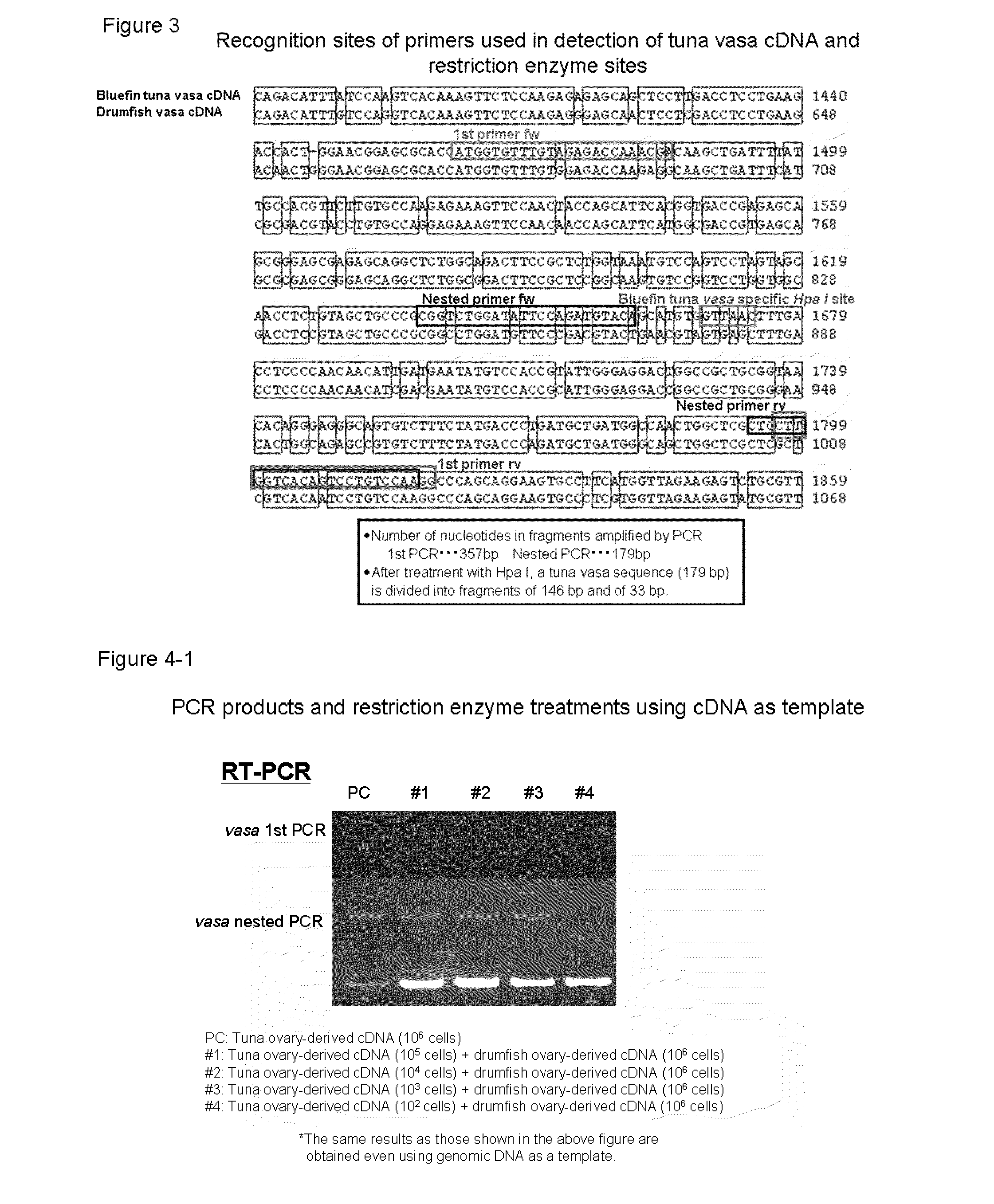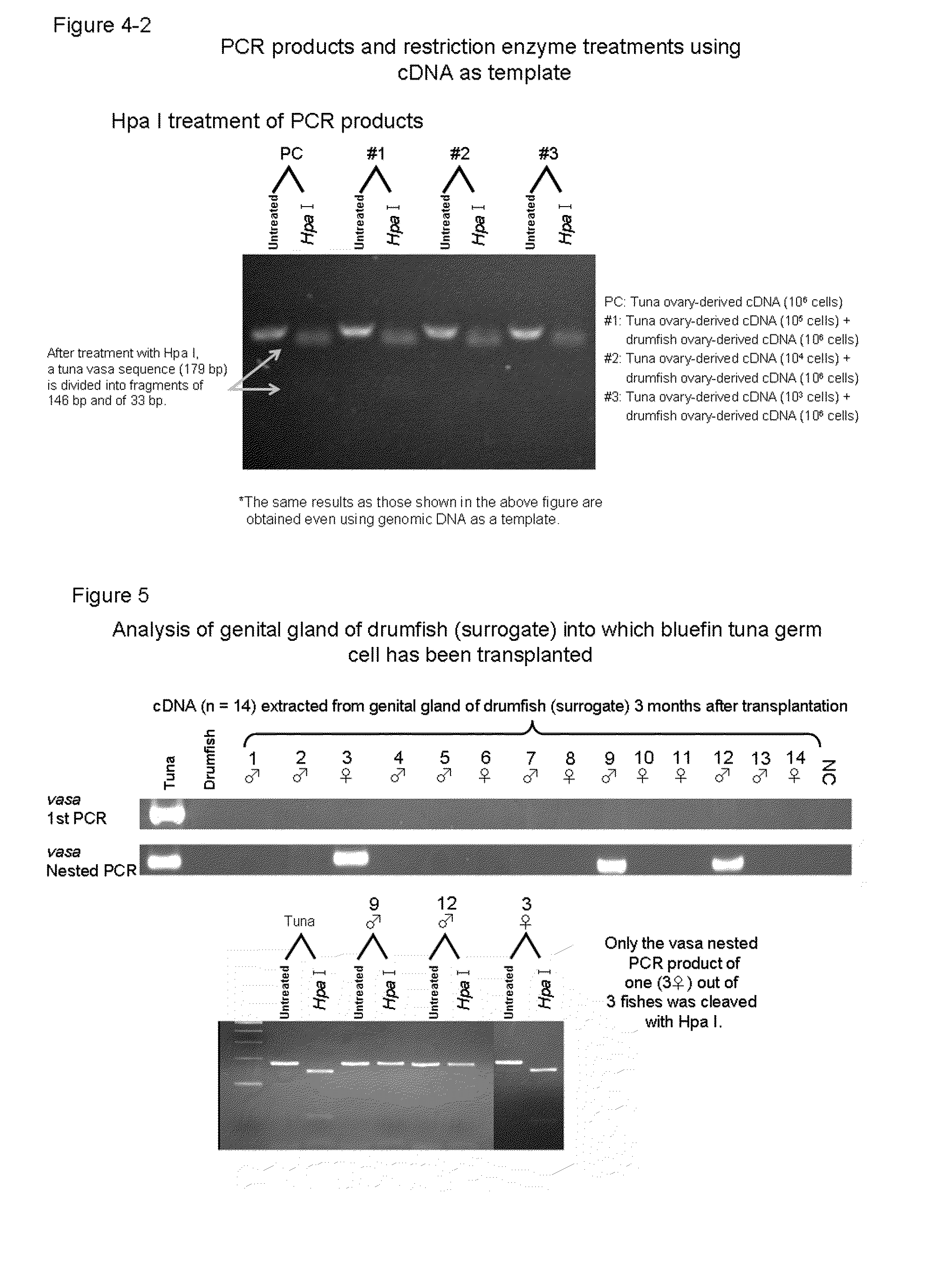Germ Cell Marker Using Fish Vasa Gene
a vasa gene and germ cell technology, applied in the direction of peptides, immunoglobulins against animals/humans, dna/rna fragmentation, etc., can solve the problems of insufficient clarification of the mechanism of maturation of tuna, and strict limitation of catch quotas for mature tuna
- Summary
- Abstract
- Description
- Claims
- Application Information
AI Technical Summary
Benefits of technology
Problems solved by technology
Method used
Image
Examples
example 1
RNA Extraction from Bluefin Tuna Testis Tissues and cDNA Synthesis
[0053]The testis was excised from each of five cultivated male bluefin tuna fishes (3-year-old; body weight: approximately 50 kg), which was then frozen rapidly on dry ice. Total RNA was extracted from the obtained testis tissues using ISOGEN (manufactured by Nippon Gene Co., Ltd.). In order to decompose DNA, a 40 mM Tris-HCl (pH 7.8) solution containing 2.2 U / ml RQ1 RNasa-Free DNase (manufactured by Promega), RNase inhibitor (manufactured by Toyobo Co., Ltd.), 10 mM NaCl, 6 mM MgCl2, and 10 mM Dithiothreitol (DTT) was added, and the obtained mixture was then incubated at 37° C. for 60 minutes. Thereafter, phenol / chloroform extraction and ethanol precipitation were performed on the reaction solution, so as to purify total RNA, and the concentration and purity thereof were then measured. Using 2 μg of the thus extracted total RNA as a template, and employing a single-stranded cDNA synthesis kit, Ready-To-Go You-Prime F...
example 2
Determination of Bluefin Tuna Vasa Gene Sequence
[0054]Subsequently, a comparison was made among the amino acid sequences of the Vasa proteins of previously reported fish species (rainbow trout, zebrafish, Oryzias latipes, gilthead, Pejerrey, tilapia, goldfish, and carp). From these sequences, regions that were expected to have high homology and to be conserved in the bluefin tuna Vasa protein were selected, and degenerate primers shown in SEQ ID NOS: 11 and 12 were then produced. Using these primers, a PCR reaction was carried out using the cDNA synthesized in Example 1 as a template, so as to amplify a DNA fragment that was estimated to be derived from the bluefin tuna Vasa gene. The nucleotide sequence of the obtained DNA fragment was determined using ABI Prism 3100-Avant Genetic Analyzer (manufactured by Applied Biosystems).
[0055]Based on the determined nucleotide sequence, a 5′-RACE primer as shown in SEQ ID NO: 13 and a 3′-RACE primer as shown in SEQ ID NO: 14 were designed. Us...
example 3
Production of RNA Probe
[0056]First, using the cDNA synthesized in Example 1 as a template, a PCR reaction was carried out with the primer shown in SEQ ID NO: 15 and the primer shown in SEQ ID NO: 16, so as to amplify a bluefin tuna Vasa fragment of 1090 by as shown in SEQ ID NO: 17. The obtained DNA fragment was inserted into a pGEM-T easy vector (manufactured by Promega), and it was then subcloned. With the produced vector as a template, an in vitro transcription reaction was carried out using digoxigenin (DIG)-labeled uridine triphosphate (DIG-1′-UTP; manufactured by Roche) and RNA polymerase (SP6 or T7 RNA polymerase; manufactured by Promega), so as to synthesize sense-strand and antisense-strand RNA probes.
PUM
| Property | Measurement | Unit |
|---|---|---|
| Fraction | aaaaa | aaaaa |
| Length | aaaaa | aaaaa |
Abstract
Description
Claims
Application Information
 Login to View More
Login to View More - R&D
- Intellectual Property
- Life Sciences
- Materials
- Tech Scout
- Unparalleled Data Quality
- Higher Quality Content
- 60% Fewer Hallucinations
Browse by: Latest US Patents, China's latest patents, Technical Efficacy Thesaurus, Application Domain, Technology Topic, Popular Technical Reports.
© 2025 PatSnap. All rights reserved.Legal|Privacy policy|Modern Slavery Act Transparency Statement|Sitemap|About US| Contact US: help@patsnap.com



